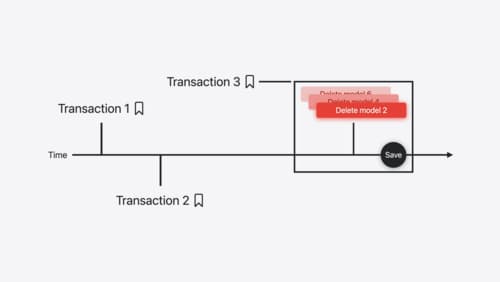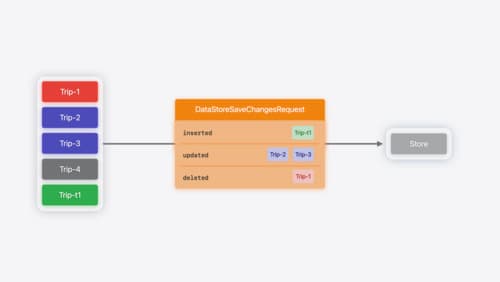How can I use swiftdata
Asked on 2024-07-31
2 searches
To use SwiftData, you can follow these steps:
-
Import the Framework: Start by importing the SwiftData framework into your project.
-
Define Your Models: Use the
@Modelmacro to define your data models. This macro helps in setting up the schema for your data. -
Model Container: Use the
ModelContainerto manage your models. You can configure it to use different storage backends, including custom data stores. -
Querying Data: Use the
@Querymacro to fetch data from the model container. This allows you to populate your views with data from your models. -
Custom Data Stores: If you need to use a different backend for storing data, you can create a custom data store by implementing the
DataStoreprotocol. This allows you to use SwiftData's API with backends like SQLite, a remote web service, or even JSON files. -
History Tracking: SwiftData provides a history API to track changes in your data store. This is useful for features like syncing with a server or responding to changes from an app extension.
For a detailed walkthrough, you can refer to the following sessions from WWDC 2024:
- What’s new in SwiftData - This session covers the basics of adopting SwiftData, customizing the schema, and using the history API.
- Create a custom data store with SwiftData - This session explains how to create and use custom data stores with SwiftData.
- Track model changes with SwiftData history - This session dives into the fundamentals of SwiftData history and how to use it to track changes in your data.
For a quick overview, you can also check the Platforms State of the Union session, which highlights the new features and capabilities of SwiftData.

Track model changes with SwiftData history
Reveal the history of your model’s changes with SwiftData! Use the history API to understand when data store changes occurred, and learn how to use this information to build features like remote server sync and out-of-process change handing in your app. We’ll also cover how you can build support for the history API into a custom data store.

What’s new in SwiftData
SwiftData makes it easy to add persistence to your app with its expressive, declarative API. Learn about refinements to SwiftData, including compound uniqueness constraints, faster queries with #Index, queries in Xcode previews, and rich predicate expressions. Join us to explore how you can use all of these features to express richer models and improve performance in your app. To discover how to build a custom data store or use the history API in SwiftData, watch “Create a custom data store with SwiftData” and “Track model changes with SwiftData history”.

Create a custom data store with SwiftData
Combine the power of SwiftData’s expressive, declarative modeling API with your own persistence backend. Learn how to build a custom data store and explore how to progressively add persistence features in your app. To get the most out of this session, watch “Meet SwiftData” and “Model your schema with SwiftData” from WWDC23.
